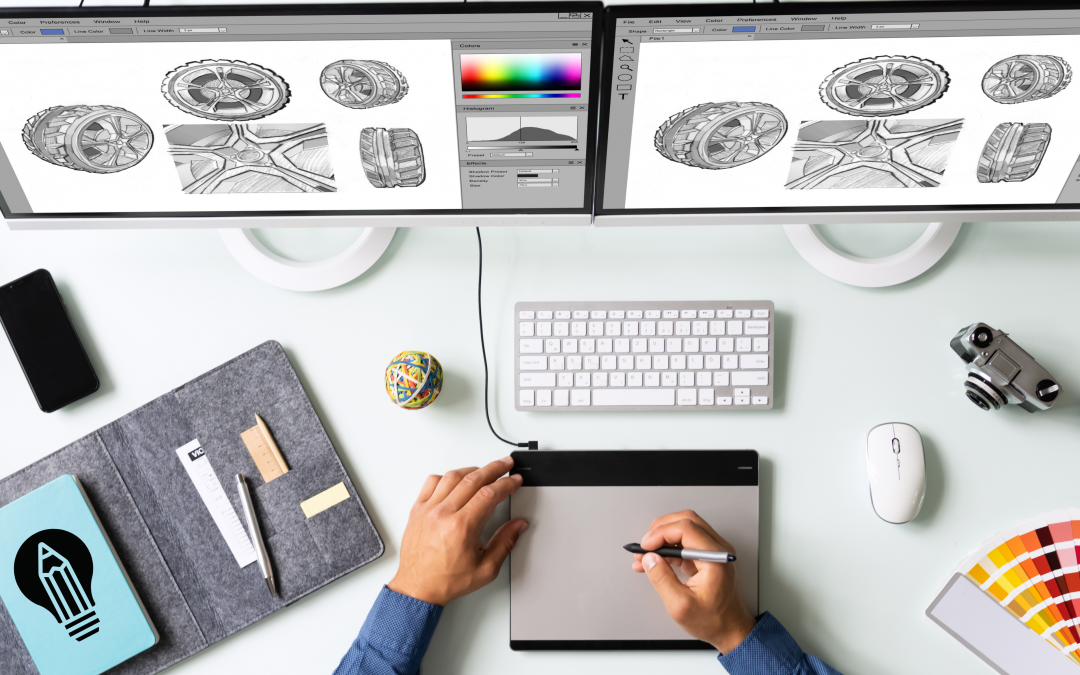Graphic design principles and thoughtful layouts are strategic tools not just decorative pretty patterns! There is much more thought behind the design and layout of a page than you may think, and this scientific, as well as creative process is often overlooked when preparing marketing materials.
So What is Important and Why?
In a world of short attention spans, we are often overloaded with information; grabbing and holding attention is increasingly hard. This is where graphic design and layout come in.
Graphic design is a form of visual communication and storytelling, from brochures and proposals to business cards and websites. Creating content that is engaging is what really matters, so you need to consider what message you are trying to convey and how you want to present it.
Psychological Response
Specific colours, typography and spacing can be strategically used to evoke emotion. By understanding the psychological impact, you can decide which colours align with the message you want to get across. Warm/bold colours can be used to guide the eye of the viewer, creating a visual hierarchy which helps with storytelling.
For example, on a business card, you may want your company name to be the part that jumps out first, followed by your services and so on.
Brand Identity
The colours you choose should also align with your brand profile, to ensure work is recognisable and clearly associated with your company. Sometimes it’s possible to over-complicate things and forget that less is often more. The use of simple shapes can be clearer and more effective than fancy patterns. Try not to get carried away and lose the message you are trying to get across by over-complicating or cluttering the page.
Simple shapes also allow you to create varied content that still has a running link associated with your brand.
User Experience
The ease of use for the user should be considered when designing things such as websites and even reports. Clear and consistent communication is the key to convenience. When working on a project, it can be easy to make mistakes and lose consistency. Some examples to watch out for are inconsistent fonts, not enough space or even too much space…
Often squashing too many things on a page can cause a loss of clarity, similar to switching between fonts. The most important thing is clarity and balance. Ask yourself if the information is clearly communicated and if it stands out where intended. Does it represent your brand accurately?
On the use of fonts and typography Colin Wheildon’s research still holds true in most cases. Though the digital age has led to some changes, his research still makes for interesting and considered reading.
So How Can You Avoid Common Mistakes and Missed Opportunities?
As mentioned above, inconsistency is a common mistake. Using premade templates for designs can disrupt the flow of unique branding, so you might want to consider creating a template or templates specific to your brand.
Another common mistake is the use of poor quality images. This can cause work to look unprofessional. You don’t necessarily need to invest in professional cameras to take quality content. In the age of smart phones, you have access to a great camera in your pocket. Making use of this can be beneficial especially if stock images don’t quite capture your vision. When taking your own photos, think about the proportions of the camera and the angles. All too often, we receive poorly considered photos from clients, which with a little more thought could have been great images to illustrate the point they were making.
Also bear in mind copyright issues. Photographers take a dim view of using images without permission. We’ve even known clients to be sued or at least sent very large invoices for using imagery without the correct licence.
What Next?
Targeting the correct audience can be tricky, but you don’t want to miss the opportunity. This can be due to a loss of engagement, miscommunication or a combination of different factors. But there is good news! Doing research into keywords and ensuring your design is thoughtfully put together, can help you get and keep the attention of the right people. Working with a good designer can ensure your brand looks professional, clear and communicates the message you want to communicate in the right way to the right people.

